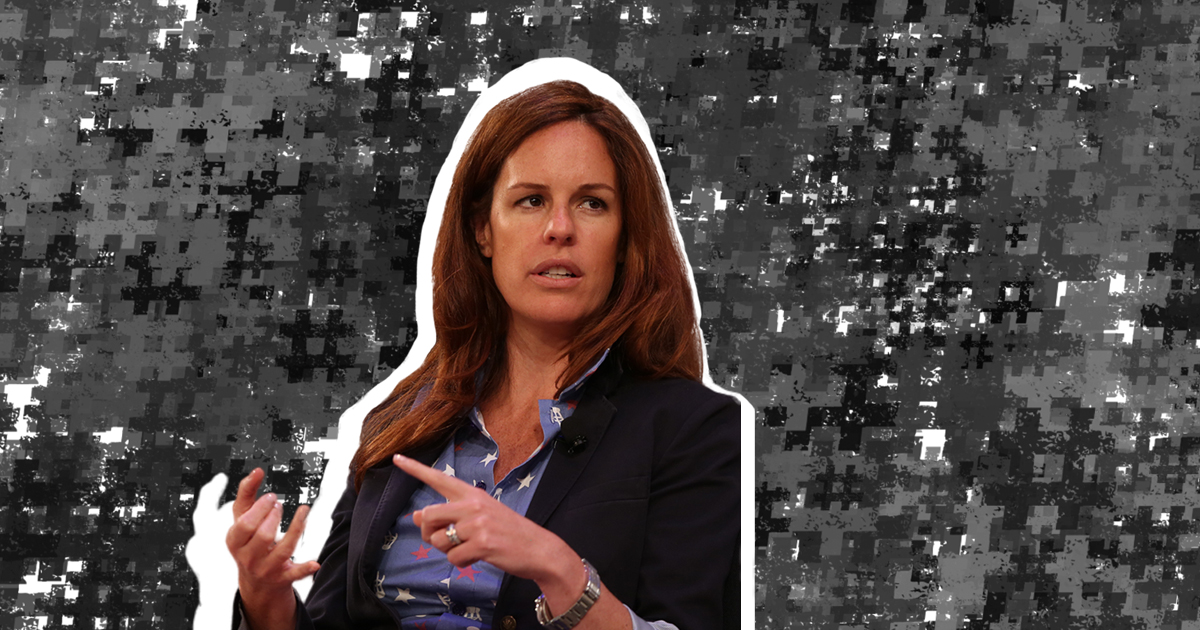Erika Nardini: Barstool Sports is the most influential brand for men in America today
CEO of Barstool Sports: We're the most influential brand for American men

By
![]() Team Hashtag
•
3 min read
Team Hashtag
•
3 min read
August 8, 2018
Erika Nardini is the CEO of Barstool Sports, the brand she boldly believes is the single most influential brand for males in America. In this week’s Agents of Change soundbite, Nardini discusses why the satirical sports publisher’s business model is a blueprint for media companies of the future. How? Internet-speed boxing, selling t-shirts more viral than tweets, and creating 200+ pieces of content per day.
Read or listen below to learn how Barstool Sports is circumventing advertising and building its foundation on direct-to-consumer revenue to better engage and monetize the connected fan.

Barstool Sports is the most influential brand for men in America today.
We are building a media company the way that a media company will look in the future. We’re almost a two year old company but the brand is 15 years old, and the audience has been with us that long. It’s an incredible audience; they are our single greatest gift.
[This] is the way companies will look in the future: socially distributed; constant conversation that’s married with content; various forms of direct-to-consumer revenue; a brand that understands virality; and a brand that understands that laughing at something, saying something, tweeting something and wearing something are all parts of the same thing.
That’s what we do exceptionally well.
Editorially, Barstool likes people who find Barstool funny and we’ve gotten much bigger.
When I got to Barstool there were 12 people. They all lived in Boston except for three people that lived in New York, myself included. We had three podcasts, and we had never been on anybody else’s air. The guys did one video show called “The Rundown,” which arguably is some of the funniest content to ever come out of Barstool, which they ran out of their apartments on Skype.
When you look at the traditional sports business, what they are managing is decline.
Erika Nardini, CEO of Barstool Sports
Now we have 700 social accounts, 19 podcasts, we create 200 pieces of content a day on radio, video, blogs and social. What we are today is essentially an IP company whereby we’re building brands that resonate with audiences between 18-49 years of age–mostly men. We launched a Snapchat show last Monday, and it’s 50-50 men and women.
So our audience is changing, but it’s not by virtue of the editing changing, it’s by virtue of the fact that we’re becoming a larger brand that lives on more platforms than just our own.
I care about understanding our audience and I think that’s what sets Barstool apart. There will never be another Barstool Sports. What Dave [Portnoy] had (and Dan Katz and Keith Markovich and Kevin Clancy) was 15 years of saying whatever they wanted and growing an audience who developed a loyalty and a relationship. When Dave started Barstool, advertisers were not knocking at the door, distribution partners were not coming around and saying “Hey, we want to carry your content” so the only way that they could monetize was to sell t-shirts, create happy hour events, and, ultimately, tours.
Want more from the brightest minds in sports and media?
Our foundation is in direct-to-consumer revenue, and we believe that we have a responsibility to our audience. If our audience feels an affinity with Barstool, there is a good value exchange there.
From my vantage point, I want to create more IP that resonates with audiences we have today and audiences we want to grow. Rough N’ Rowdy is a great example of that.
We bought a boxing promoter out of West Virginia in October last year. We do a live pay-per-view boxing event every eight weeks in a different state and different city. In that boxing event we do 33 one-minute round fights, which is internet speed boxing. It’s made for the internet. We understand the internet; we’re creating an entertainment vehicle that has its own IP and its own audience that’s born out of Barstool Sports. It’s funny, it’s sports, it’s comedy, it’s a little weird, and it’s unexpected, so that’s a good example of us building into the Barstool brand and finding new brands that will sit inside and alongside our portfolio.
Those could be brands that take shape of consumer products; those are brands that could be entertainment brands. I don’t think we will pursue television the way I pursued television two years ago, but we will pursue more video; we will pursue being linear, and we will pursue new brands.
The average age of a television viewer is between 65- and 67-years-old. So there’s two challenges with traditional media, whether it’s sports or otherwise.
One is that you are dependent on one revenue stream, which is in attrition: subscription. And the other revenue stream, advertising, creates incredible influence over the content that you create. And the two are at odds. The less people you have, the harder it is to drive advertising.
I also think that by virtue of the age of a television viewer, those brands are not in touch with what young fans or people on the internet want, and I don’t think it’s just about being young, I think it’s about being “of the internet.” I don’t know what happens to traditional companies, but there’s a difference between managing growth, which is what the challenges are at Barstool Sports–we’re managing incredible growth–and then there is managing decline. When you look at the traditional sports business, what they are managing is decline.

Erika Nardini, CEO of Barstool Sports, spoke during SportFronts — a digital content showcase from executives of the leading media companies, publishers, and platforms. Learn more here.